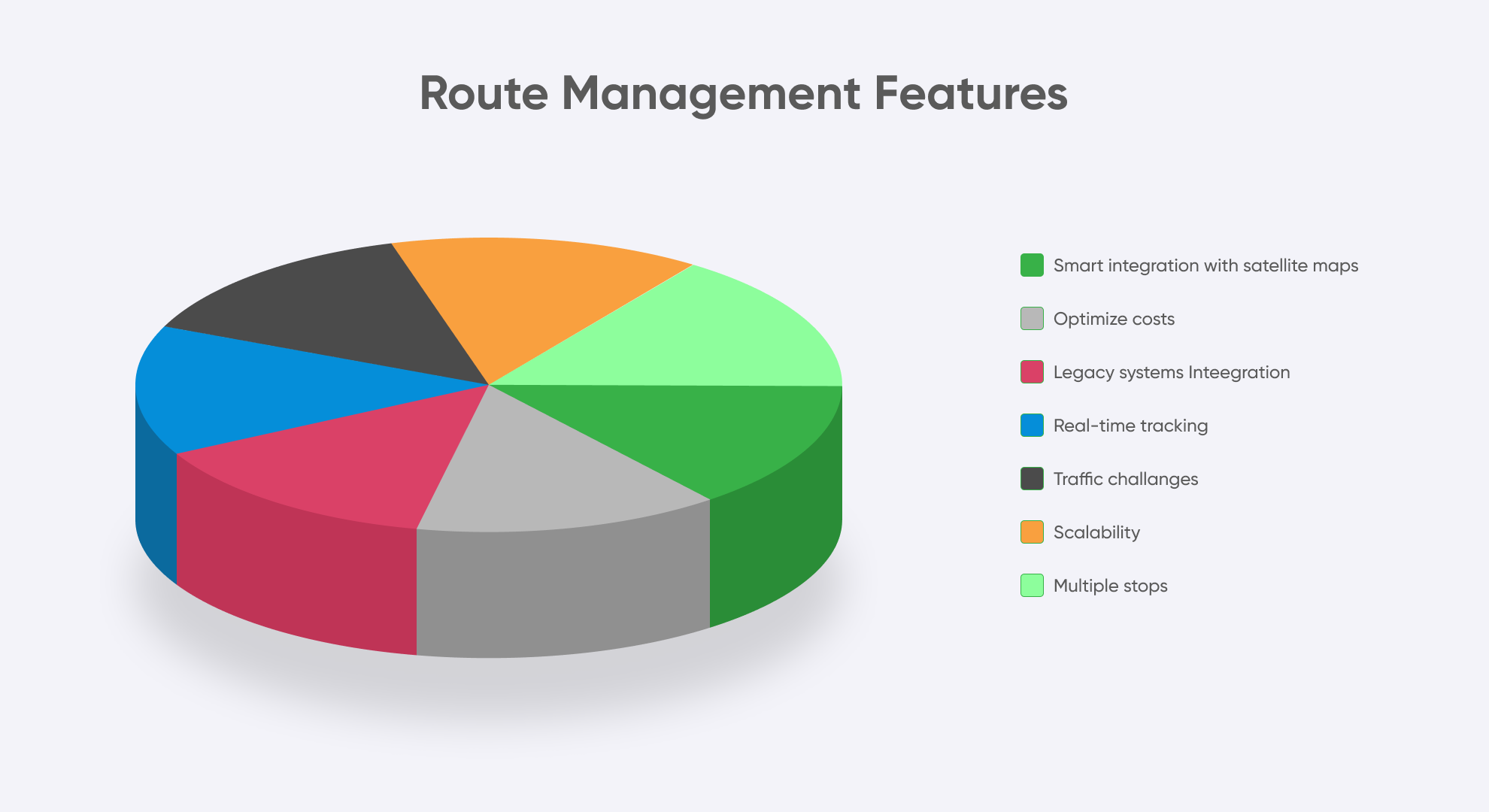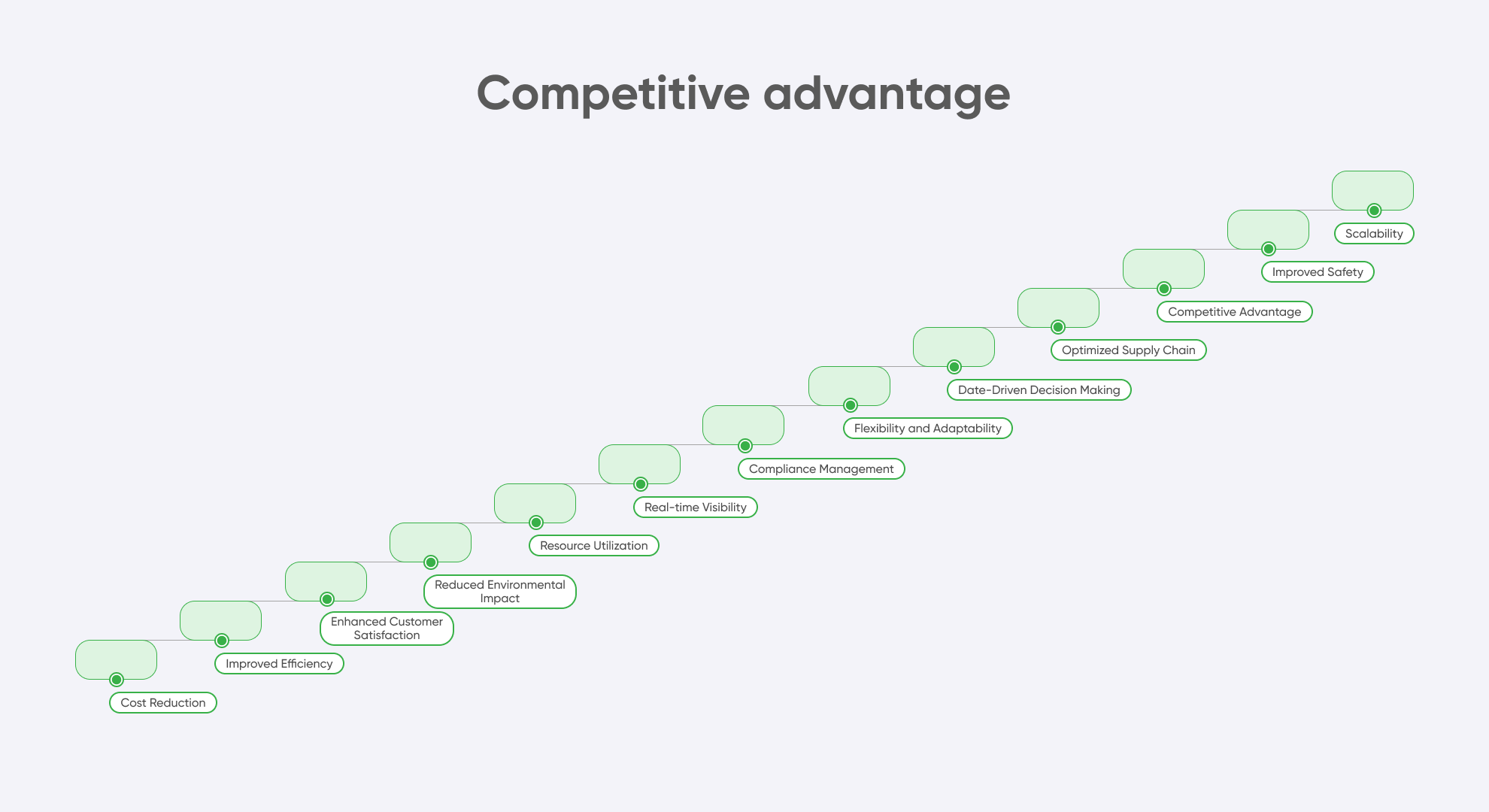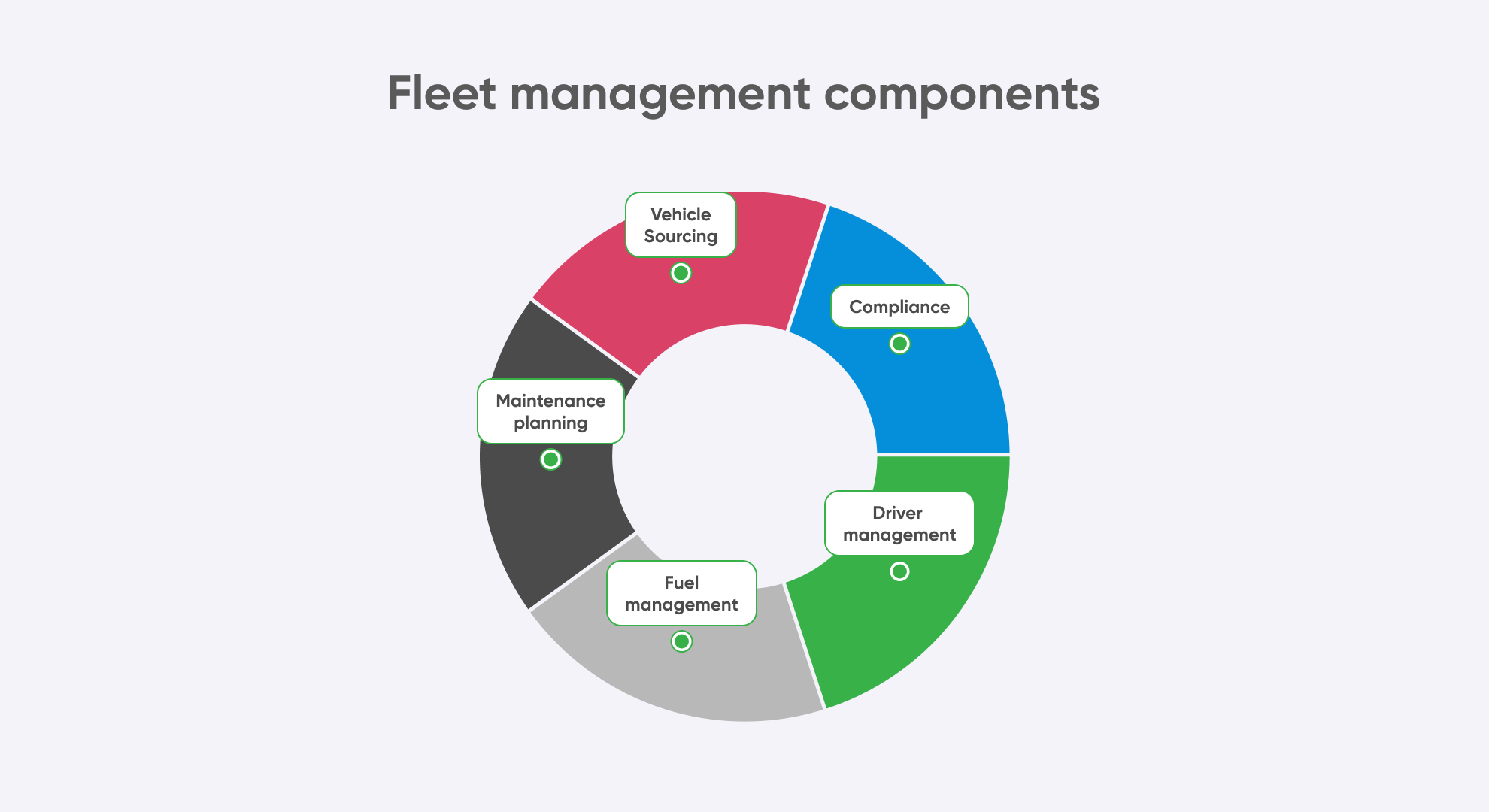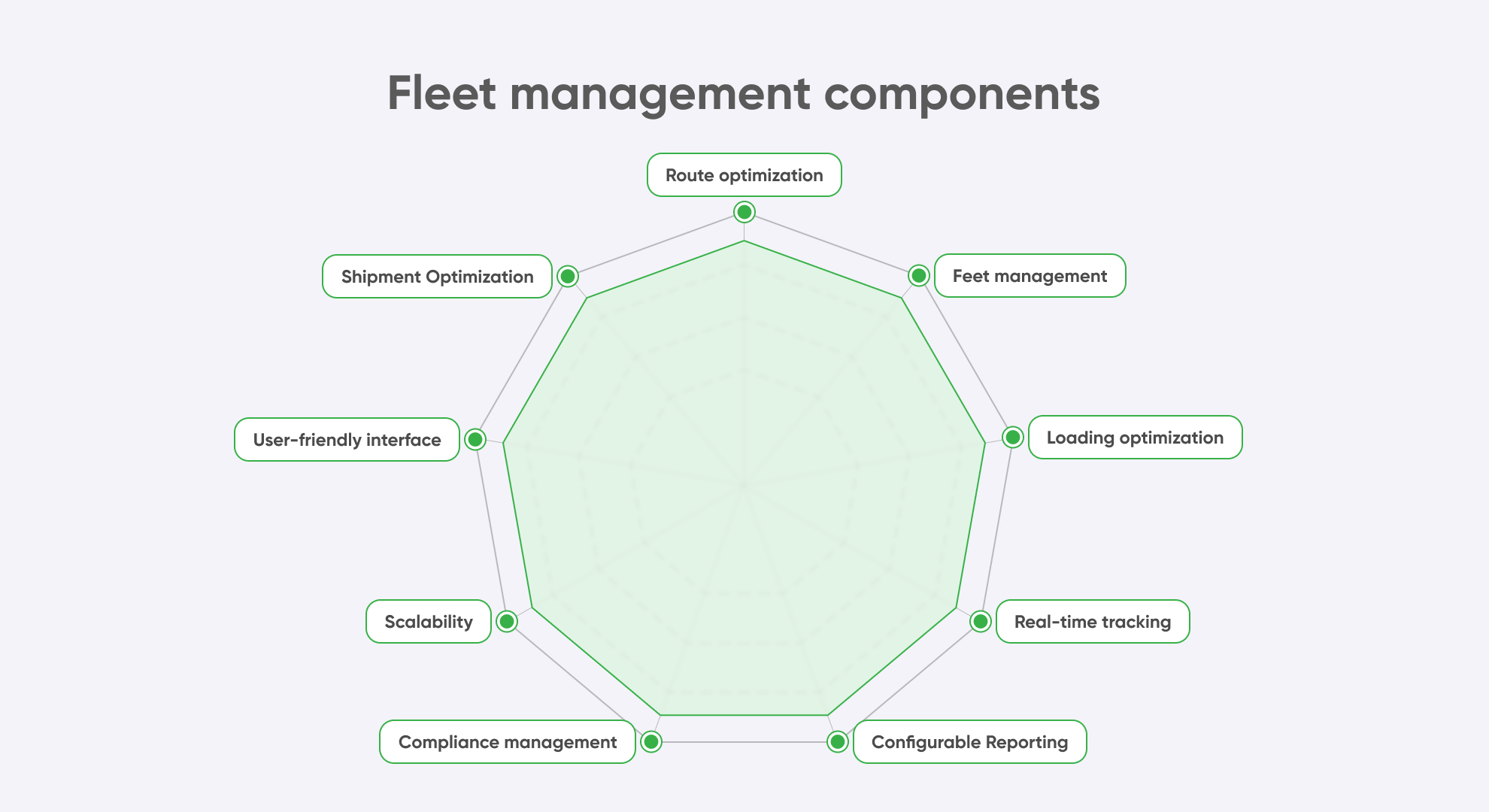Transport optimization best practices can be verified by firm numbers that outline their results. In logistics, supply chain, and transportation, there is a common approach based on continuous improvement, which aims to deliver the desired improvement. By focusing solely on transportation, it is a challenging task. For example, in transportation optimization, we can refer to McKinsey research, which shows that integrated digital workforce-management transformation, applying different tools and techniques, can unlock 10 to 20 percent of additional value for T&L companies.
We now know that automating and streamlining your processes can even tackle the complexity of each industry. It also gives you a holistic view of all operations to keep your business running. Luckily, today's logistics managers can finally avoid making decisions based solely on assumptions and gut feelings. Frankly, logistics and transportation in the supply chain are KPI-oriented businesses that prevent company resources from slipping through the cracks. While we all operate on very narrow margins to remain competitive, you should consider best practices for transportation optimization, such as fuel costs, delivery windows, and key performance indicators in your operations.
This article is like sharing our deep knowledge from firsthand experience. You can learn more about affordable areas where optimization can influence your operations. We share insights about practices used by top market players. You can also delve deeper into custom software solutions for transportation optimization and higher vehicle capacities with better delivery routing. Let's embark on this insightful journey.
What is transportation optimization?
Looking through the lens focused on logistics, transportation, and supply chain, we can define optimization quite clearly. It is a strategic process that aims to improve the efficiency and effectiveness of transportation and logistics operations.
I recall that term from my direct experience with UPS Supply Chain in the Netherlands. Once, I was responsible for 14 collection points in the EMEA region. I was focused on managing transportation between the distribution center in the Netherlands and 14 countries as efficiently as possible.
Several factors always influence transportation efficiency in the supply chain. Among those, we consider the following:
Time delivery
ETA, so to speak, estimated delivery time, is essential. For example, when we wanted to import goods from Scandinavia, countries like Sweden, there weren't many carriers we could use. One of the most popular was Bring Cargo, but to be honest, their ETA and ability to deliver on time were always questionable. As a result, I often disputed invoices — whether because they failed to deliver goods on time or because they wanted to charge me extra for dead freight, for example.
Another issue was that they didn't offer pickups every day but only two days a week. My goal was to arrange transportation so that goods could reach the distribution center in the Netherlands, enabling us to export our consignment to Taiwan collectively from all collection points. It was a bit challenging, so time was crucial in this situation.
Transport costs
When we manage international transport, various fees can apply. These often depend not only on loading space but also on fuel costs, the type of cargo, distance per kilometer, and several other factors. The carrier determines the total price by combining these elements. Looking at this today, pricing was one of the most important elements I had to deal with. Each time, we were obliged to book transport every week, which, on a yearly scale, became a significant part of the budget. It made it an essential focus for supply chain management, aiming to lower expenses.
Getting the cheapest service is always tempting, but cost remains a top factor in transportation. This is why companies in the transportation industry often operate on such low margins. Many companies also rely on procurement platforms for shipping and freight to secure lower prices for their desired delivery points.
These are the two top points I share. The main goal of transportation optimization is to enhance the overall efficiency of the transportation network while minimizing costs and maximizing resource utilization. That is a great conclusion, which we will explore in greater depth. As mentioned earlier, optimization can be applied to various modes of transportation. Whether dealing with road, rail, air, sea, intermodal, or others, you can focus on cost savings and validate whether it still aligns with your business requirements. It's not beyond the realm of possibility that you may switch between transportation modes to achieve better results.
Here, we will provide a more detailed explanation of the optimization strategies you can apply to each transport mode. But first, we want to emphasize the key areas common to all modes of transportation.

Critical aspects of transport optimization include:
Route optimization
Here, you can determine the most efficient routes for transporting goods to minimize shipping costs and time, fuel consumption, and costs. However, it's essential to be cautious and verify the routes taken by the carrier of your choice. Carriers may use various approaches that unnecessarily increase costs. For instance, if you pay for a full load, the carrier might still deliver pallets for other customers along the same route. It should not be the case if you've exclusively paid for the delivery service. Always ensure the agreed terms are adhered to and you're not unfairly incurring additional costs.
Cargo optimization
It maximizes available cargo space to ensure that shipments are economically and environmentally viable. You may consider using a loading software platform to efficiently fill your container. Such a platform can help you optimize the use of space in each 40-foot container or even assist with estimating the load. It might mean you can opt for a smaller 20-foot container if appropriate. Efficiency begins here with the ability to predict and plan effectively.
Planning optimization
It is about efficient planning and scheduling of transportation activities. It helps avoid delays, reduces downtime, and increases overall productivity. Here, we talk about the integration between order management, personnel planning in the warehouse, and even specific tasks such as dock planning. For example, if your warehouse has limited capacity and seven loading docks with ramps but handles 25 shipments daily, you likely need to pay close attention to departure times. Keeping your dispatch plan as a top priority is crucial to avoid penalties. If a truck isn't loaded on time, you may incur costs for dead freight (which essentially means an empty load, so to speak).
Inventory optimization
This area is about balancing inventory levels to meet demand. For transportation, this means ensuring timely product availability and lowering logistics transportation costs. It's no secret that you may be required to implement a WMS (warehouse management system) to handle warehouse operations efficiently. Such a system can assist with return management and even help create picking batches for order pickers, reducing the time spent collecting orders. Moreover, you can incorporate many options when using custom software development services to enhance your operations further.
Technology integration
Technology goes hand in hand with innovation, so implementing advanced technologies such as GPS tracking, IoT devices, and custom software solutions for real-time data collection can help you make more informed decisions. As mentioned above, you can optimize your transportation better once integrated with a WMS system. We're talking about integration with a TMS (transportation management system).
Cost optimization
You should combine all aspects of transportation to identify opportunities to lower transportation costs. It can include fuel consumption, maintenance, and labor costs. As you can see, the cost of maintenance and labor is crucial to consider. For example, I recall that personnel spent hours sorting our pricing list for trips and bookings in the office, sending emails, etc. It is still common in many companies, but implementing a TMS system tailored to your operations can reduce the workload by hours per week. When we think about how stressful work can be in the office at a distribution center, optimizing these processes is even more necessary.
Need help with custom software development for your transportation business?
Learn how we can help you
Explore moreTo give the best example of transportation optimization, we can focus on utilizing container space for shipping by sea. I briefly mentioned this earlier, but let's review it more closely. It's important to highlight that containers will undergo intermodal transportation, so the journey begins with trailers at the distribution center. The containers are loaded, delivered to ports, and then loaded onto cargo ships to be shipped through the sea to their destination.
By optimizing the load of containers, you can more effectively utilize space. For example, if you ship 40-foot containers with a weekly quantity of 20, you could reduce the load to 20-foot containers. It means you could potentially save ten pallets per shipment. This process starts at the warehouse and impacts the entire transportation chain.
Optimizing freight can yield a return on investment (ROI) ranging from 4% to 8% on freight costs. Considering a shipment volume of around 20 per week in a 40ft container, we can picture what remains to be allocated within our budget. Thus, optimization has real and measurable benefits to one of the most important areas of transportation.
How do we optimize transportation?
One way to optimize transportation is to digitize most of the processes involved in shipping costs. Route optimization software is a type of technology designed to streamline and improve the planning and execution of transportation routes for vehicles such as delivery trucks or service vehicles.

Key features of route optimization software may include:
Smart integration with satellite maps. It integrates with maps and real-time traffic data to meet the challenges of current road conditions and potential delays. It also boils down to predictive analytics, forecasting potential disruptions, such as traffic congestion, accidents, or weather events, enabling proactive route adjustments. You can run dynamic route replanning, which automatically recalculates routes based on changing conditions in real-time.
Multiple stops. You gain the ability to operate multiple stops within a single route while optimizing the order of those stops. When planning your load, time window optimization is always necessary. Your truck may need to visit several warehouses where docks must be ready for loading. It ensures timely deliveries by considering strict delivery time windows and optimizing the sequence of stops across various warehouses. Finally, you receive an electronic proof of delivery (POD) to streamline operations and enhance accountability. It allows you — and everyone else — to see exactly when the delivery was made.
Traffic challenges. The software helps you overcome constraints such as delivery time windows, vehicle capacity, and special restrictions or requirements. You can identify and avoid congested areas by rerouting vehicles to less congested routes. This feature provides alerts and notifications for unexpected events, such as accidents or road closures, enabling quick response and rerouting.
Optimize costs. You can reduce transportation costs, including fuel and labor. Using this approach, you can analyze historical data to identify fuel-efficient routes and driving behaviors, ultimately reducing fuel consumption and lowering costs. Moreover, if you're switching your operations to green energy, investing in eHDVs (electric Heavy Duty Vehicles) means you'll also want to optimize costs related to electricity usage.
Real-time tracking. Real-time vehicle tracking allows you to monitor route compliance and respond to unexpected changes. Geofencing is one of the newest features, which sets up virtual boundaries to track vehicle movements and trigger alerts for unauthorized entry or exit. Moreover, you can receive real-time notifications whether you're a driver or a manager. These provide timely alerts for various events, such as vehicle breakdowns, unauthorized stops, or delivery delays.
Scalability. You can gain the ability to scale and adapt to different fleet sizes and vehicle types. Whether you're a small or medium-sized company, you can benefit just as much as larger companies. The feature allows you to adapt to various fleet sizes, vehicle types, and business requirements. It provides actionable insights to optimize operations and improve decision-making.
Legacy systems integration. Route management software can seamlessly integrate with other logistics and transportation systems for a comprehensive solution. One of the most important integration elements is the ability to migrate data. When integrating an old WMS system, historical data should be migrated from legacy systems to the new route management software. Of course, API integration is also needed. It connects to existing systems using APIs to exchange data and automate processes.
By deploying route optimization software, you can develop transport optimization strategies that require cohesive cooperation between various business entities and implement processes that help with better deliverability.

Here are examples of supporting strategies and processes for shipping and delivery that can be implemented by using route software:
Just-in-Time (JIT) delivery
JIT is a logistics strategy that ensures that products or materials arrive precisely when they are needed in the production process. It minimizes inventory costs and warehouse space. The impact of JIT (Just-In-Time) is tremendous, especially for manufacturing companies. The JIT strategy enhances manufacturing firms' operational and financial performance. A measurement model has shown that the Just-In-Time strategy reduces lot size in the plant and improves operational performance by approximately 0.914 points.
Just-in-Sequence (JIS) delivery
JIS is a variation of just-in-time manufacturing in which components are delivered to the production line in the order required for assembly. It optimizes efficiency and reduces production delays. Modeling the JIS (Just-In-Sequencing) strategy in factories can lower lead times by about 40%, reduce space requirements by about 45%, and decrease overall logistics costs by approximately 25%.
Last-Mile delivery
The last-mile delivery type focuses on the last stage of the supply chain, aiming to efficiently deliver goods from distribution centers to the end consumer. It often uses technology and local delivery networks to increase speed and convenience. In recent years, we have observed the transformation of e-commerce last mile delivery with APM (Automated Parcel Machines), where, for example, InPost is a leader and expected to remain so in 2025 in this transportation segment. Their recent research has proven that last-mile labor intensity can be reduced by about 86% for every 1,000 parcels!
Reverse logistics
This logistics process involves managing product returns, refurbishment, recycling, and disposal. It plays a crucial role in optimizing supply chains and addressing environmental considerations. While returns account for an estimated 4.4% of USD 14.5 trillion in global retail sales, what is quite staggering is that Gartner research shows only 48% of what is returned can be resold at full price. So, optimization in this segment is highly required. For example, VidaXL, an e-commerce store, has a huge department dedicated solely to collecting spare parts from returned goods to recover as much value as possible from losses. Their optimization of this part of the transportation process is a top priority.

By understanding where route and transportation software can assist with transport optimization, we can easily observe which industries deploy specific strategies and processes for logistics and transportation to support supply chain planning. In many cases, companies use all the mentioned processes to some extent. In 2025, we can still see how DHL, InPost, and UPS benefit from last-mile delivery, which is crucial for small and medium-sized businesses cooperating with these logistics giants. By utilizing route management software, your business can better handle expectations while subcontracting delivery to UPS, InPost, DHL, or FedEx. These companies extensively use independent carriers and freight forwarders to extend their supply chain networks.
Therefore, you may more effectively secure contracts with major industrial players when your business complies with requirements. For this purpose, the best practice is to present some experience with route management software, which instantly increases your business capabilities.
According to trusted sources such as Gartner, using software solutions for transportation and route management is not just an ongoing trend. Statistics show that as much as 46% of all transportation, supply chain, and logistics solutions in use, including areas such as delivery operations, are covered by digital solutions.
What are the benefits of transport optimization?
Transport optimization is about continuous improvement. It means that you can gain long-term advantages and see results in the short term. It all depends on the areas where you're seeking performance adjustments. Being in your company during customized software development can help you achieve much more, as you can optimize your transportation in various areas.

Here are the benefits of transport optimization:
What is fleet management about?
Fleet management applies to the comprehensive coordination and organization of a company's vehicles. It's mostly about trucks, trailers, and container management. It involves a series of tasks and responsibilities dedicated to optimizing truck operations' efficiency, safety, and cost-effectiveness.

Here are crucial components of fleet management:
Vehicle sourcing. Fleet management involves selecting and purchasing vehicles that meet the company's operational needs. Size, capacity, fuel economy, and technological features are considered. It might also be crucial in 2025 vehicle lifecycle management. Optimizing the vehicle lifecycle, from procurement to disposal, maximizes value and minimizes costs.
Maintenance planning. Fleet management helps schedule and oversee regular maintenance and repairs to ensure the optimal condition of fleet vehicles. In this way, breakdowns and downtime can be reduced. For many from now on and further through 2025, it might be important to consider predictive maintenance, using data analytics to predict potential maintenance issues, reduce downtime, and optimize maintenance schedules.
Fuel management. Using a fleet management strategy, you can accurately monitor fuel consumption to control costs and increase efficiency. Using fleet management software, you can implement strategies such as route optimization and fuel-efficient driving. You can also track fuel card usage to identify potential fraud or misuse and optimize fuel spending.
Driver management. Driver management helps maintain a qualified, trained, and safety-compliant workforce. It includes monitoring driver behavior and addressing any safety or performance issues. Providing ongoing training to drivers is about to improve their skills and safety performance.
Compliance management. Fleet management helps you stay compliant with legal and regulatory requirements. You won't miss out on driving documents such as licenses, or you can maintain compliance with carbon emissions standards and safety regulations. I highly recommend that starting in 2025, we digitize and automate document management processes, such as driver logs, maintenance records, and insurance certificates.
Need help with custom fleet management solution?
We are happy to support you
Explore moreAs already mentioned, fleet management is more efficient when deployed through software. In many cases, fleet management software will allow you to optimize your routes instantly with this built-in element and carrier management. There are three very characteristic elements of fleet management software, as it enables your business with all the functions above it can assist with, as follows:
Integration with legacy systems. For a more comprehensive and interconnected approach, ensure seamless integration with other business systems, such as supply chain management and logistics software (like inventory management and warehouse management systems).
Analytics tools. Fellet management software always provides analytics tools that allow you to process data to provide valuable insights into vehicle performance, driver behavior, fuel efficiency, and maintenance needs.
Mobile access enables fleet managers to access and monitor critical information on the go. It means having a mobile app that can be used on tablets. It benefits both sides, as your drivers can also benefit from mobility during this time. Mobile apps improve responsiveness and decision-making.
Giving an example of best practices for fleet management, we can certainly refer to the software capabilities in the area. So, it was mentioned that fleet management software enables your business with analytics. These can help lower CO2 emissions and influence cost savings in fuel consumption. Reduction of fuel usage can be even about 5-10%. It was found that lower fuel consumption directly results in lower CO2 emissions because 35% of emissions come from fuel consumption in transportation.
Fleet management optimization
Fleet management is one of the best-known ways to optimize transportation, but it's unclear for many small and medium-sized businesses when fleet management software might be required. Small and medium-sized truck fleet owners may perceive fleet manager software as a faraway prospect. Nothing could be further from the truth. This is because the optimization term is not exclusive to large companies. Small and medium businesses should be even more cautious, as transportation optimization ROI can be significantly more important in the short term. And this is how you can benefit from it. You can gain fast ROI, as your margins and incomes significantly affect your business plans due to more customers.
This article has mentioned that software provides your business with capabilities for transportation optimization. Integrating some of the software modules allows you to construct your own transportation management system (TMS) dedicated to supporting continuous improvement, specifically transportation shipment process optimization.
Custom software for transportation optimization is a solution tailored to your specific business needs. It means you can quickly gain a competitive advantage by benefiting from functions that are not available, particularly commercial off-the-shelf software (COTS) solutions.

Custom software enables your business with these capabilities:
Route optimization
Developing software allows you to embed customized algorithms and logic for efficient route planning. Unstandardized functions might support delivery schedules, road conditions, and fuel management. Trends in 2025 are telling us a lot about the green transition. So, eco-friendly routing will be the leading one, identifying the most fuel-efficient routes to reduce carbon emissions and minimize environmental impact.
Fleet management
Customized software can combine functions for truck fleet management, providing a comprehensive platform for overseeing and optimizing a company's fleet of vehicles. In 2025, it's also time to consider vehicle telematics. This involves integrating telematics devices to monitor vehicle performance and fuel expenses. You can also learn more about driver behavior in real-time to train them better.
Loading optimization
Customized solutions can enable your warehouse with dock scheduling and loading planning to maximize vehicle payloads for cost-effective transportation. Well, you can think about 3D load planning in 2025. Optimizing load placement to maximize transportation capacity and prevent damage to cargo can be very easy. It is not a development of 2025, but it is getting more affordable even if you invest in custom software development (or even more than an off-the-shelf solution).
Real-time tracking
You can get GPS tracking for your truck fleet, trailers, and containers with customized functions. Advanced tracking capabilities can monitor the location and status of vehicles in real-time for better visibility and responsiveness.
Configurable reporting
You may leverage your operational ability to create customized reports and analytics tailored to specific metrics. It means that you can run, among other things, key performance indicators (KPIs) relevant to your business and create more accurate forecasts. Modern TMS systems provide customizable dashboards you can display in a warehouse or OSG office. So, in 2025, it is good to provide your teams with customized dashboards to visualize key performance indicators (KPIs) and track business performance.
Compliance management
Customized software can provide tools to ensure compliance with industry regulations, security standards, and other regulatory requirements. When we think about compliance in 2025, it is worth focusing on audit trails and reporting. This system might generate detailed audit trails and reports to demonstrate compliance with regulatory requirements.
Scalability
With customized software, small and medium-sized businesses can gain a high flexibility ratio to scale the software as the company grows or new requirements emerge.
User-friendly interface
Customized software allows you to build an intuitive and user-friendly interface tailored to the specific needs of the transportation team. I've seen many systems that are difficult to use. When developing custom software, you should focus on the end users just as much as the system architecture. In 2025, intuitive design, with clear navigation and easy-to-use features, should be a top priority. It can lower training time and make the job significantly easier.
Shipment optimization
You can get a strategic demonstration and optimization shipment process with customized software. Your logistics and supply chain management can focus on maximizing the efficiency and cost-effectiveness of transporting goods from one location to another.
These are some of the most valuable functions to increase your business operability. You can build specific modules using custom software development on top of your existing system. In this way, you don't have to increase your expenses for developing completely new business logic but can exceed the existing one. Before you decide on a software solution, it is worthwhile to consider what factors play a crucial role in evaluating custom software development companies. You need to learn how to navigate the choice of the best transport optimization software for your business.
Moreover, it is worth considering not only the software but also the functionality that is needed specifically in the case. For example, the truck owners assistance application we developed allows us to track cargo from receipt to delivery and payment, improve the submission of documentation at the time of delivery, optimize agreements flow, and confirm purchase rates. It would have been possible to develop an entire TMS, but in this case, a narrower solution was proposed, which significantly optimized the work in the company. In the same way, it is better to approach all developments and extensions; everybody needs to understand what problem needs to be solved.

Final takeaway
We emphasize the importance of digitizing transportation processes. You can empower your business with key features by using route optimization software, especially in conjunction with other modules of the transportation management system (TMS). These include intelligent integration with satellite maps, handling multiple stops, overcoming traffic challenges, cost optimization, real-time tracking, scalability, and seamless integration.
It underscores its potential to revolutionize transportation planning. At Adexin, we specialize in assisting companies with optimizing transportation by developing customized software solutions. With a wealth of experience, we have successfully helped companies in various countries' transportation, logistics, and supply chain sectors. We bring tangible value to your business through a customer-centric approach. Contact us today, and let us help with transportation optimization.
Are you in search of a reliable tech partner?
Adexin can help with advanced logistics solutions
Contact us

